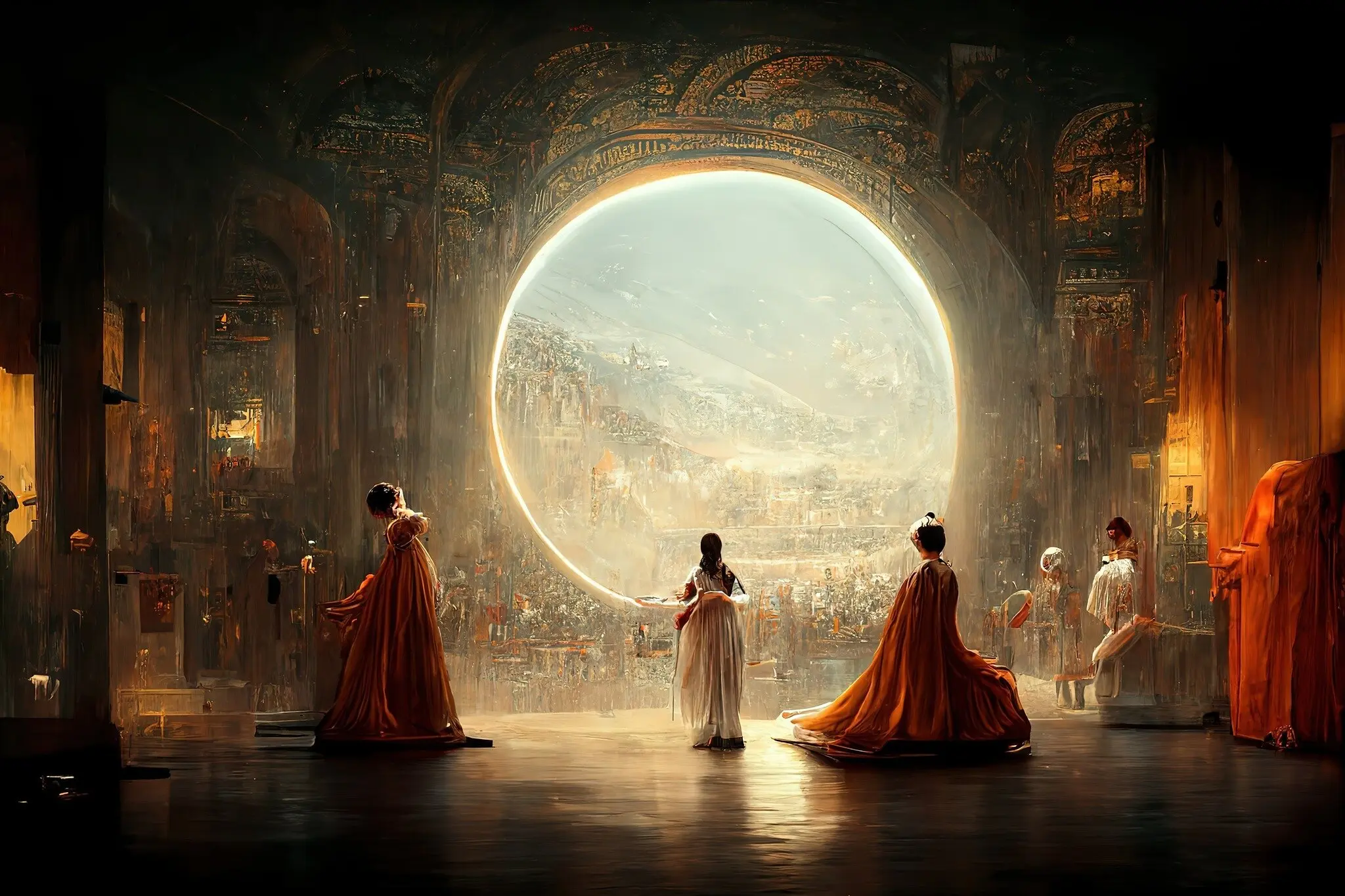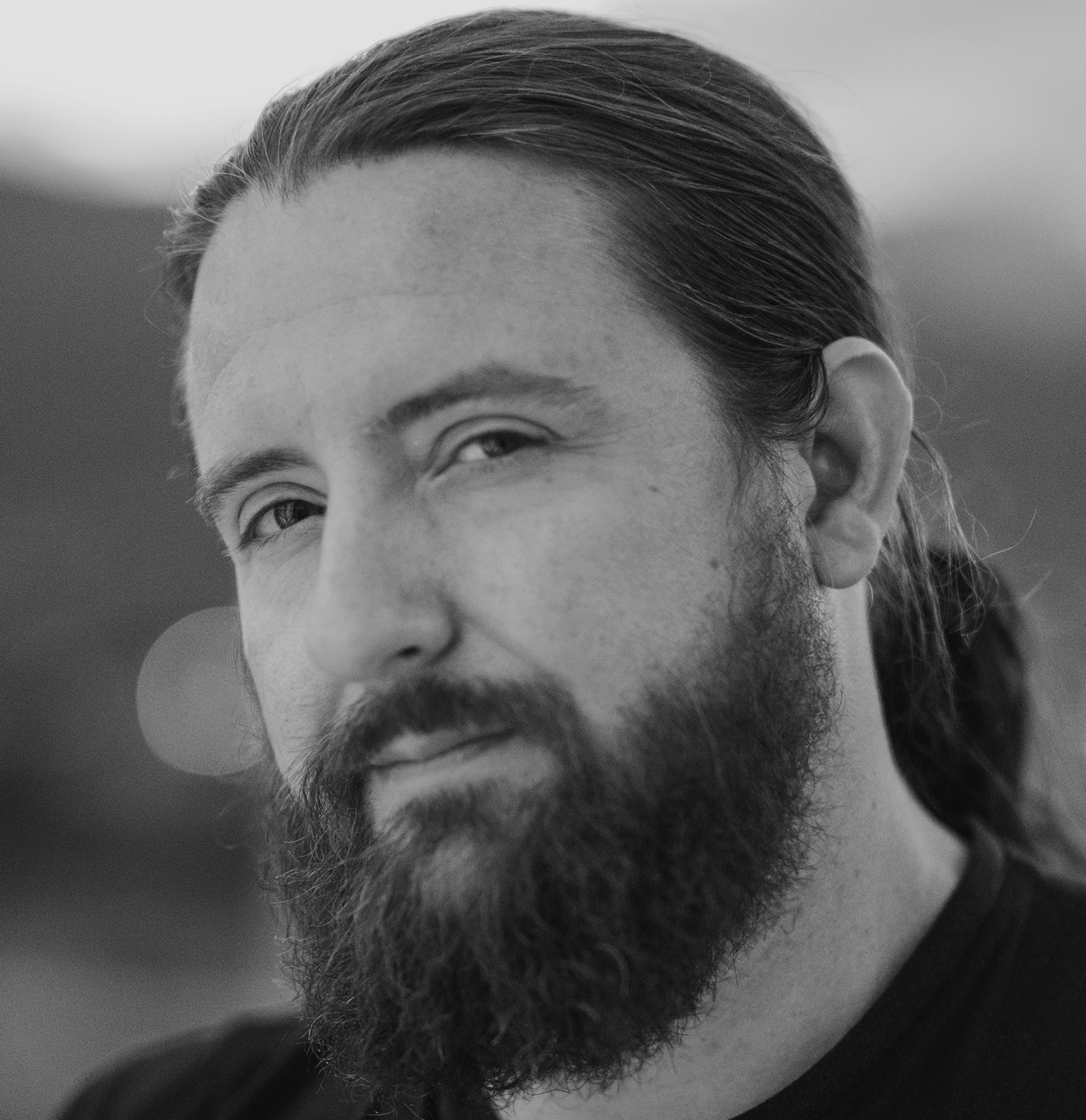A Brush
With AI
The Copyright
Fight
For Digital
Creativity
The U.S. Copyright Office
needs to adapt to the AI Future.
Generative AI presents a tremendous opportunity to unlock human creativity in ways that never could have been imagined when the concept of copyright emerged.
But the U.S. copyright regime has become an obstacle to this new era of innovation--and not because of what the law actually says.
The U.S. Copyright Office is contorting decades of precedent to impose arbitrary rules on when and how creators seeking copyright protections can use AI tools in their work. If they don’t get with the times, the consequences won’t just be limited to artists like me.
In 2022, my painting Théâtre D’opéra Spatial won a Colorado State Fair award for digital art. I decided to register it with the USCO, even though I knew the office might shoot down the request because I produced it using Midjourney AI.
That’s because the painting had already attracted massive controversy. Even though it was always labeled as an AI-assisted artwork, and the judges confirmed it was a fair decision, critics accused me of lying, art theft, and worse.
What I didn’t expect was for the USCO to write off the entire submission with a dismissive, one-page response: “We have decided that we cannot register this copyright claim because the deposit does not contain any human authorship.” It was hard to believe the nation’s copyright authority would issue a decision on such a consequential issue—who owns the rights to AI art?—with so little substance.
It wasn’t until Tamara Pester Schklar, my intellectual property lawyer, and I pushed back in a request for reconsideration that we received any elaboration. The USCO did admit one mistake. The extensive editing and modification I did to the original AI-generated work was in fact eligible for copyright registration. The USCO also indirectly confirmed that its decision was not based on a finding that AI-generated art infringes on others’ copyrights.
The AI cannot read my mind and steal my ideas for itself.”
But it doubled down on denying a copyright to the entire work with an argument that, if accepted, would be disastrous: not only am I not the author of Théâtre D’opéra Spatial, it is “clear that it was Midjourney—not Mr. Allen—that produced this image.”
That’s just not true. The painting wasn’t spit out by Midjourney at random, but reflected my artistic process of iterative testing, conceptualization, and refining outputs until I find an image that translates my vision into reality. But more importantly, each of those steps was the result of careful and deliberate instructions entered by a human. The AI cannot read my mind and steal my ideas for itself.
Courts have consistently updated their interpretations of copyright to reflect new types of technological innovation (and to challenge biases against them). For example, in 1884, the Supreme Court ruled against a company which had distributed unauthorized lithographs of photographer Napoleon Sarony’s portrait of Oscar Wilde, shooting down the firm’s claim that photography is a mere mechanical process not involving an author.
In other words, the court found Sarony’s camera was a tool through which the photographer translated his mental conception into an artistic work. AI generators like Midjourney might rely on complicated algorithms instead of light focused through a lens onto a film coated in light-sensitive chemicals, but it’s a difference of degree, not kind.
There is no incomprehensible magic going on; Midjourney’s servers don’t have a consciousness of their own. They run diffusion models calibrated using a training set of millions of other images. Diffusion models use deep learning to deconstruct data from the training set, add truly random Gaussian noise, and then attempt to reconstruct the original data. The end result is a model tuned to generate entirely original images.
As we told the USCO in our second request for reconsideration, tools like Midjourney are interactive systems that by definition require humans to code, train, and run them. They’re cameras with extra steps. To put it another way, the USCO is effectively arguing the camera is now so complicated it’s also the photographer!
U.S. copyright law is clear that non-humans cannot author or own the rights to art in any meaningful legal sense. Monkeys are indisputably more self-aware than a large language model. Yet when one picks up a Kodak in the jungle and clicks a button, it doesn’t get the rights to any accidental selfie.
Even the Copyright Office’s decision that my modifications to the raw image in Photoshop are copyrightable as a derivative work isn’t free of haphazard reasoning that should alarm any artist. While the USCO conceded human authorship of the edits, it found the “appreciable amount of AI-generated material” in Théâtre D’opéra Spatial required limiting the copyright to “exclude the AI-generated components of the work.”
But it hasn’t clarified what constitutes an “appreciable” degree of AI content, even though it seems to draw distinctions between an author’s creative input and the tools they use.
No one can make those decisions without interrogating a creator’s methods and processes. Copyright Act precedent clearly limits a court or reviewing agency’s review to perception of the final product, not how or why it was designed.

Do we really want the office applying subjective determinations as to what parts of the artistic process are worthy of protection? Consider the rise of AI-assisted features like Photoshop’s generative fill, which uses machine learning to create and modify elements of an image, and the mess that would result if the Copyright Office continued to apply the same capricious standards.
This isn’t theoretical. On similar grounds of non-human authorship, the USCO denied that I could copyright versions of the painting upscaled via Gigapixel AI, a tool that simply enhances pre-existing details in an image without introducing any original elements. Similar tools like Photoshop filters are already in widespread use. Any remaining contrast between non-AI and AI-powered features of imaging editing programs will inevitably disappear as their developers introduce more powerful features.
This fight is not about me, and it’s not just about art. Already, my company Art Incarnate has been forced to come up with creative solutions for releasing fine art prints, like taking photographs instead so they can be protected as derivative works. Other workarounds like open source licensing can only do so much.
Businesses and entrepreneurs are rapidly adopting generative AI in other fields ranging from entertainment and media to publishing. At some point, though, the novelty will wear off and they will be forced to confront practical commercial challenges. Without assurances that they will be able to safeguard their intellectual property, or that they won’t be forced to jump through IP loopholes to prevent competitors from copying their work, they may be hesitant to continue investing in AI technologies.
Nor is this fight, as critics argue, a vehicle to cheapen the output of traditional artists. We are fighting to extend ownership protections to all creatives who utilize AI in their work, helping keep their livelihoods intact.
Do you agree with this?
Do you disagree or have a completely different perspective?
We’d love to know

